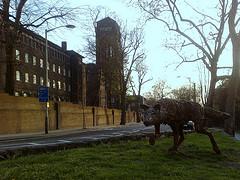 Why it was necessary to classify the transistors by classes and using the best in the most critical locations (the same thing was done with rheostats, which could only be achieved with a tolerance of 20% and were sorted into classes of 2%). The microphone pre-amplifier was also something special. For this component, transistors were totally dismissed and had to use a valve. A local oscillator fed the cathode of the small valve, heated directly, via a transformer, and valve could then be used as an extension of the cathode. The valve was suspended on a spring device to prevent an excess of microphone effects.
Why it was necessary to classify the transistors by classes and using the best in the most critical locations (the same thing was done with rheostats, which could only be achieved with a tolerance of 20% and were sorted into classes of 2%). The microphone pre-amplifier was also something special. For this component, transistors were totally dismissed and had to use a valve. A local oscillator fed the cathode of the small valve, heated directly, via a transformer, and valve could then be used as an extension of the cathode. The valve was suspended on a spring device to prevent an excess of microphone effects.
Acoustics was not easy to make Acoustic measurements of the microphone and the box. Bruel & Kjar was not camaraanecoica, nor the DTH (then known as DTU, Technical University of Denmark). The measurements were made using a model of the instrument with the half size, situated in an asymmetric box, about two meters long, which absorbed the sound. This configuration was not too accurate and, indeed, subsequent measurements showed that the acoustic behavior was not expected. The microphone was mounted at the apex of the cone of the housing and the influence of housing was about 2 dB, instead of 1 dB that was expected. This was corrected later by inserting a Swan between the microphone and the housing neck. 1965 For sound level meters of accuracy international standard was based on the model 2203 which continued manufacturing for 21 years (with improvements throughout his career).